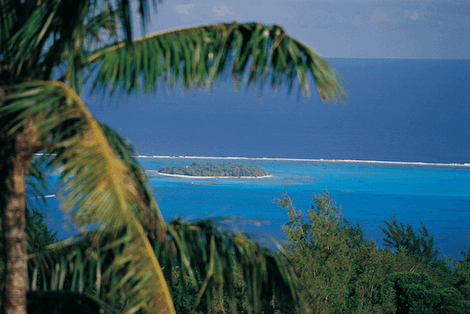Jeremy Tredinnick experiences exceptional hues and natural highs in Saipan
The sun sizzles, barbecuing the back of my neck. My dive gear seems twice its normal cumbersome weight as I negotiate the steep, tricky steps into the Grotto, a huge, open sea cavern rated one of the world’s top cave dives. Despite my laboured breathing and screaming leg muscles, my excitement begins to build as we reach water’s edge and prepare to enter a truly enchanting submarine landscape.
Looking towards the shadow-draped rock wall that separates us from the sea, I catch a glimpse of open ocean through one of the three submerged entrances. The largest opening arcs just below the surface, revealing a shallow crescent of intense violet-blue that winks at me, beguiling, beckoning. We double-check our equipment, and take a giant stride into the abyss...
The Commonwealth of the Northern Mariana Islands (CNMI) begins just 65km north of Guam, comprising 14 islands running in a graceful, 680km arc that bends northwest towards Japan. The majority of its population of 54,000 live on the largest island, Saipan. Volcanic in origin, it stands on the edge of the planet’s greatest chasm, the 11km-deep Mariana Trench.
Visitors come to Saipan seeking sun, sport and relaxation in a year-round tropical setting. At 22km long and up to eight wide, the island is expansive enough to boast some beautiful wilderness on its eastern and northern sides, and bustling centres of tourism down its western coastline. Resort hotels front onto white-sand beaches, which drop into a broad turquoise lagoon that’s ideal for every kind of watersport imaginable, from windsurfing to parasailing, kiteboarding to jet-skiing, not to mention snorkelling and diving on the many wrecks and remnants of Saipan’s World War II history.
My first adventure comes as I sink into the Grotto’s cool water, marvelling at the water’s clarity – the cavern walls are all clearly visible, though it’s over 60 metres wide, and outside in the iridescent open ocean, massive sea fans branch out from the wall to feed on nutrients brought in abundance by the strong currents. There are many other top dive sites in Saipan, like current-swept Naftan Point and Eagle Ray City, an area of white sand where eagle rays often congregate in huge numbers, but if you only have time for a single dive, it would have to be the Grotto every time.
Above water Saipan has plenty of appeal as well. Attractive rows of flame trees line the roads – from April to June they blaze with glory, bursting into life with orange blossom. On the road to the Grotto we stop at the base of towering Suicide Cliff, one of a number of rock faces on Saipan where defending Japanese troops and their families, rather than surrender to the conquering US forces in the latter stages of WWII, jumped to their deaths in mass suicides. The cliff is impressive and very picturesque, but the thought of the young, innocent lives lost there has a sobering effect.
Taking a stroll down Micro Beach, which faces the broadest point in the sheltered lagoon, I watch windsurfers and kiteboarders racing across the turquoise-green water, while in the background parasailors seem to float across the cloud-strewn sky – Saipan’s reliable northeast trade winds make it ideal for these sports.
The following morning I mountain bike across the island’s central uplands, then hike through the Forbidden Island Conservation Area to a vantage point with stupendous views of the rugged eastern coast. Forbidden Island is a picturesque slab of rock broken off from the mainland; around it the shallow waters are so clear that even from high on a cliff I can see turtles swimming around close to shore. Farther out to sea the water turns to cerulean blue, a pure blue I have never seen anywhere else. Only 100km away the Pacific Ocean reaches its greatest depth – I experience a moment of profundity as I contemplate this, then turn, descend to the inviting sea and snorkel with the turtles.
GETTING THERE
United Airlines flies between Manila and Guam, from where Freedom Air (http://freedomairguam.com) flies daily to Saipan. Tokyo and Seoul have direct connections through Delta Air Lines and Asiana Airlines respectively, while Sichuan Airlines operates twice-weekly charter flights from both Guangzhou and Shanghai. For more information visit the Marianas Visitors Authority website at www.mymarianas.com









